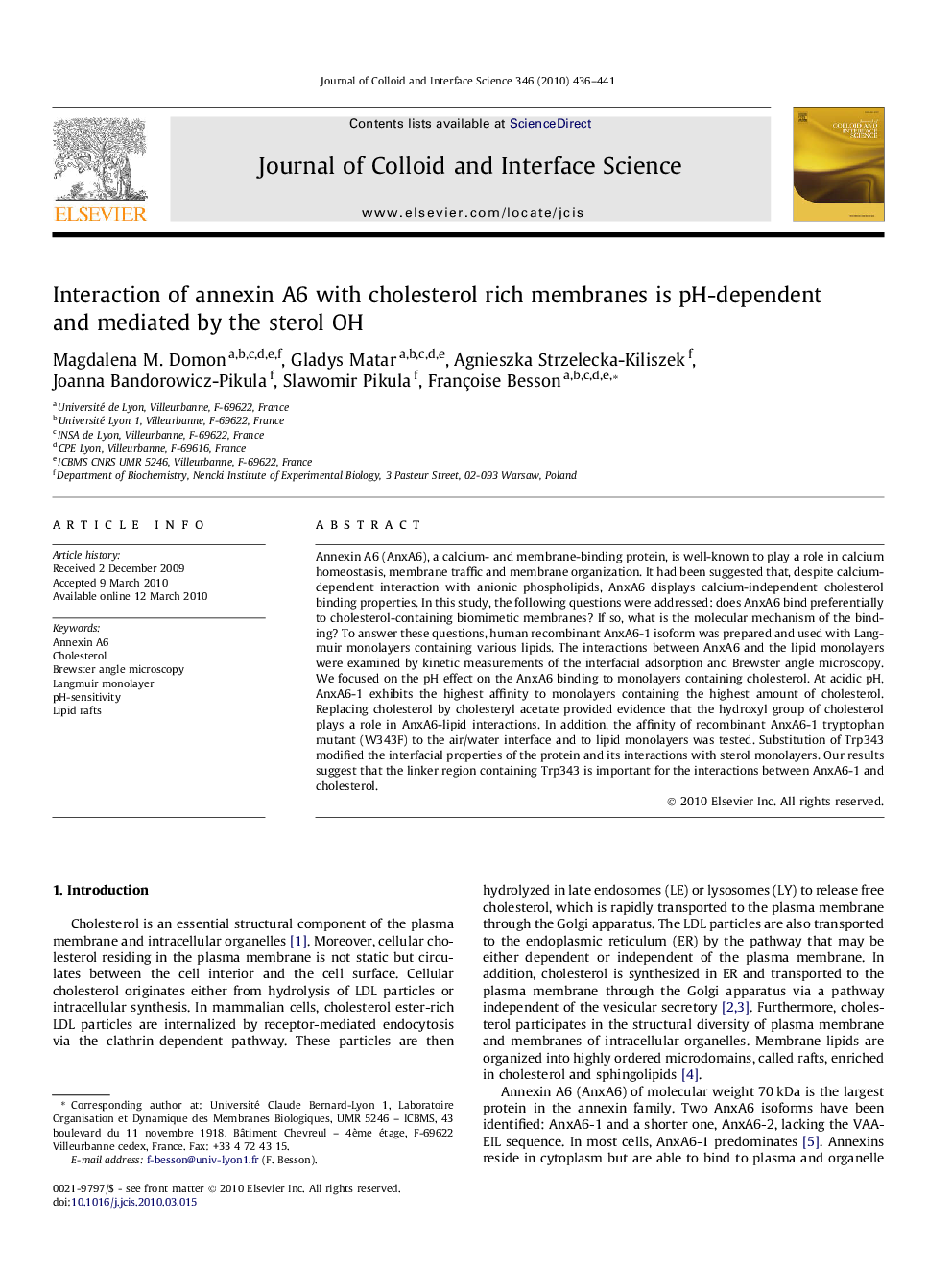| Article ID | Journal | Published Year | Pages | File Type |
|---|---|---|---|---|
| 609784 | Journal of Colloid and Interface Science | 2010 | 6 Pages |
Annexin A6 (AnxA6), a calcium- and membrane-binding protein, is well-known to play a role in calcium homeostasis, membrane traffic and membrane organization. It had been suggested that, despite calcium-dependent interaction with anionic phospholipids, AnxA6 displays calcium-independent cholesterol binding properties. In this study, the following questions were addressed: does AnxA6 bind preferentially to cholesterol-containing biomimetic membranes? If so, what is the molecular mechanism of the binding? To answer these questions, human recombinant AnxA6-1 isoform was prepared and used with Langmuir monolayers containing various lipids. The interactions between AnxA6 and the lipid monolayers were examined by kinetic measurements of the interfacial adsorption and Brewster angle microscopy. We focused on the pH effect on the AnxA6 binding to monolayers containing cholesterol. At acidic pH, AnxA6-1 exhibits the highest affinity to monolayers containing the highest amount of cholesterol. Replacing cholesterol by cholesteryl acetate provided evidence that the hydroxyl group of cholesterol plays a role in AnxA6-lipid interactions. In addition, the affinity of recombinant AnxA6-1 tryptophan mutant (W343F) to the air/water interface and to lipid monolayers was tested. Substitution of Trp343 modified the interfacial properties of the protein and its interactions with sterol monolayers. Our results suggest that the linker region containing Trp343 is important for the interactions between AnxA6-1 and cholesterol.
Graphical abstractInfluence of pH on the interaction of annexin A6-1 with preformed cholesterol monolayer.Figure optionsDownload full-size imageDownload high-quality image (44 K)Download as PowerPoint slide
